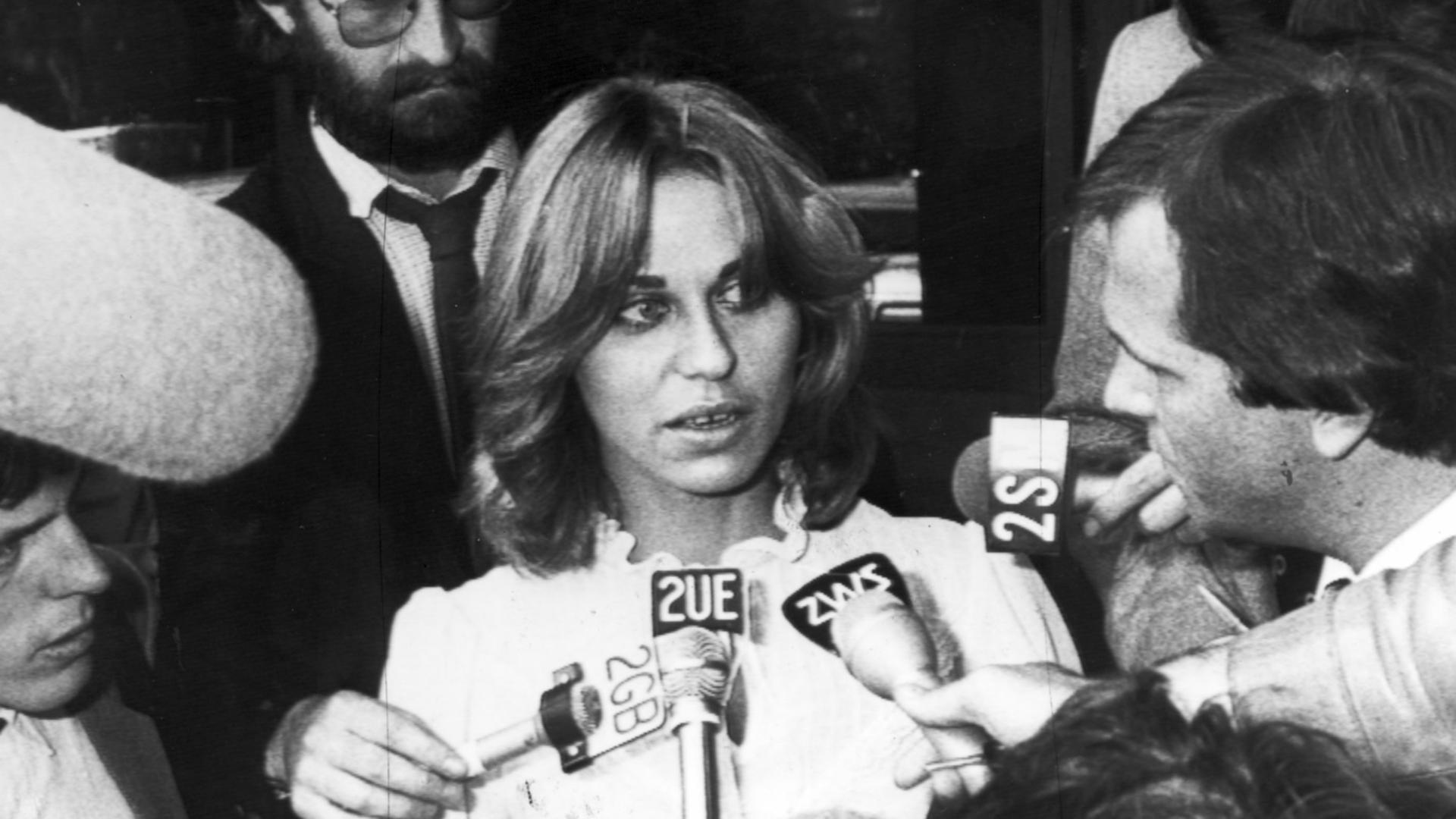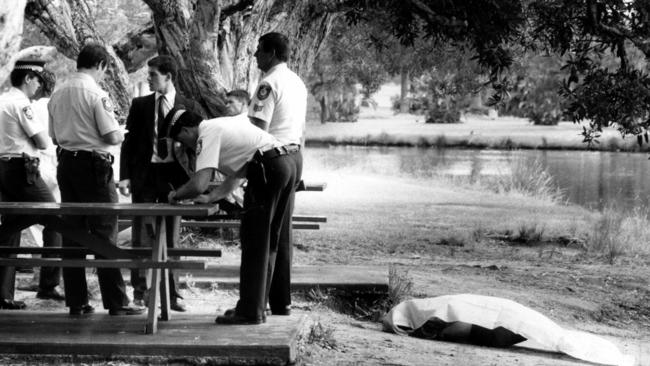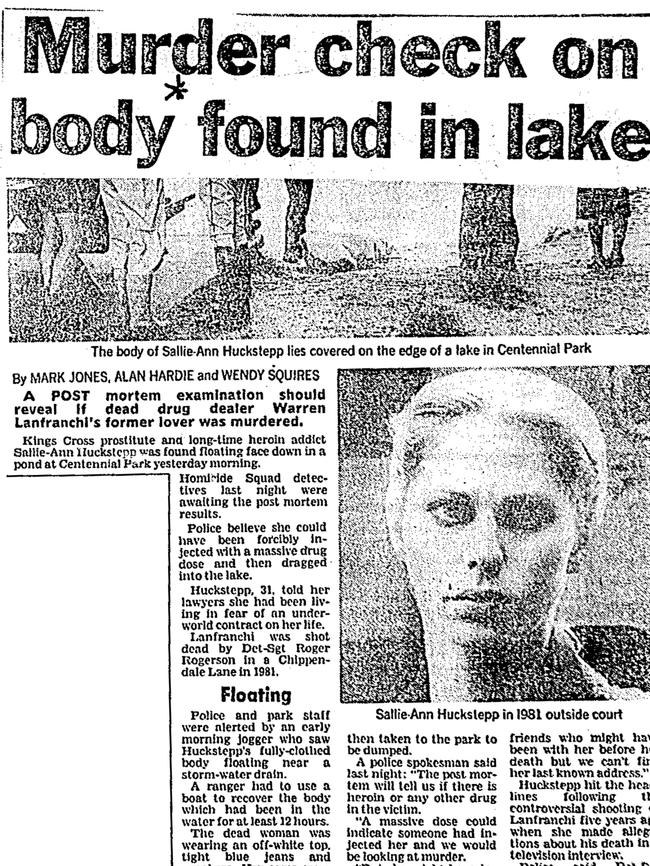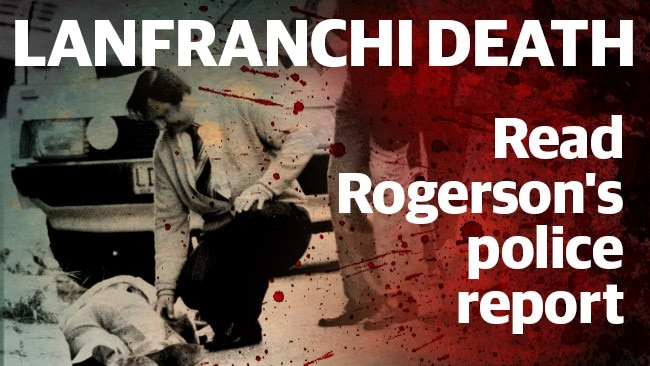
BY 1980 Roger Rogerson seemed invincible.
There was even talk the charismatic blue-eyed detective was on his way to become Police Commissioner.
He stood proudly as he was bestowed with the most prestigious honour a NSW police officer could receive — the Peter Mitchell Award for outstanding police work.
It complimented the 13 recommendations for bravery already in his box of accolades.
Yet, Rogerson’s perfect world was about to unravel.
The star detective of the Armed Hold Up Squad was moved to the Darlinghurst police station in an area dubbed “The Golden Mile”.
The opportunity for graft and corruption on the Kings Cross strip was about to explode.
In the back alleys of the Cross “shooting galleries’’ where starting to pop up where a new breed of never-before-seen drug addicts were emerging.
Neddy Smith, Rogeron’s number one informant, was ahead of the game and had discovered the riches to be made in heroin.
He quickly set himself up as a major distributor. And it brought mountains of cash the likes he had never seen before.
In 1978 he boasted supply lines from Asia and had a network of dealers throughout Sydney.
His relationship with Rogerson was set in stone. Everyone was happy.
Did Roger introduce Neddy to the heroin trade or did Neddy tip Roger into the it? No one can be sure.
But one thing we know for certain is the powers to be had made a fatal error in moving Rogerson to the detectives room at Darlinghurst.
“He was bitter about that move and really I believe things went down hill from there,’’ retired Chief Superintendent Brian Harding said.
Six months into 1981 the first chink in the seemly bullet proof career of Rogerson appeared when he shot dead a violent criminal and emerging heroin dealer named Warren Lanfranchi.
The third man shot dead in public in five years by Rogerson seemed straightforward at first — the top cop was doing his public duty ridding the streets of dangerous criminals.
Like Philip Western and Butch Burns before him, Lanfranchi was just another legal kill.
Less than three hours after the shooting Rogerson signed a seven page statement of his version of events.
It was a doozy.
“About 2.30pm, Thursday, 14.5.1981 — Senior Constable Walker of the Inner City Cycle Patrol was patrolling Lyons Rd, Drummoyne. At this time he saw a green Holden Commodore disobey a red light. He followed the car and saw two male occupants in the front of the vehicle. The Constable stopped the car ... and as he approached the driver’s side of the car a third man, who had apparently been lying on the back seat of the vehicle sat up and pointed an automatic pistol at the Constable and pulled the trigger. The pistol misfired and the offender tried to re-cock at and at the same time called on the driver to go. The Commodore sped away and was lost by the Constable.”
The Constable attended the Armed-Hold Up Squad office one week later, and from a selection of photographs nominated the decease Lanfranchi as the offender.
Rogerson’s police log would also say that an offender named Stephen Phillip Pauley was the front seat passenger of the car and had “nominated the deceased (Lanfranchi) as the man who tried to shoot a cop”.
“He (Pauley) further nominated a third offender in the vehicle as Aaron Thomas Smith,” Rogerson’s log said.
“Smith apparently acted as the driver during this escapade.”
Smith was arrested on the June 24 at Redfern.
Both Pauley and Smith said Lanfranchi intended to murder the Constable, according to the log.
And they admitted they were on their way to commit an armed robbery.
Pauley further nominated Lanfranchi as being his co-offender in a string of armed robberies, including major banks.
“On the 9th June, 1981 whilst under observation the deceased was seen to meet Stephen Pauley and Lynette Woodward — a known prostitute and Pauley’s de facto wife,” Rogerson said in the log.
Then at “about 2pm” on Thursday, June 25 it was logged that “an informant contacted Detective Sergeant Rogerson stating that he wished to see him urgently”.
“The informant was spoken to shortly afterwards and informed Rogersons that the deceased had made approaches to him offering $30,000 to be paid to the police for him not to be charged in relation to all matters.
“The informant was told that every effort was being made to effect the arrest of the deceased. “The informant iterated that the deceased had informed both him and other persons that he would not voluntarily surrender, that he was armed, and in this regard the informant had actually seen a 9mm Smith and Wesson pistol carried down the front of his trousers ... and he had boasted that he would shoot it out with police.”
Yet, a meeting went ahead.
At 2pm the informant contacted Rogerson stating that he had the deceased in his company and that they had driven around the Chippingdale area and had selected Dangar Place, which runs between Beaumont Street and Abercrombie Streets, as a suitable meeting place.
Rogerson was instructed to wait in the vicinity of Beaumont Street.
The meeting was to take place at 2.45pm.
The informant apparently stressed that “the deceased was in a highly agitated state”.
“He did not think the deceased was armed but he would (not) guarantee it,” the log says.
Interestingly the word “not’ was added in pen after the typed entry.

“Members of the Armed Hold Up Squad were deployed in various positions in the vicinity of Dangar Place,” the log says.
“In particular, Detective Frazer was to lie on the floor of the vehicle which Rogerson drove into Dangar Place.
“Also Detective Sergeant Harding and Detective Senior Constable Moore, using Moore’s private vehicle, were to be in proximity.”
About 2.50pm, Rogerson is said to have observed Lanfranchi walk towards him.
“The deceased, on becoming aware of what was happening said to Rogerson, “You’ve f---ing tricked me, this is a f---ing ambush”,” the log says.
“The next instant, the deceased was seen to pull out a silver coloured revolver.
“He commenced to bring it up and point it in Rogerson’s direction. At the same time Detective Rogerson drew his service revolver, No: 1196, a normal .38 calibre issue Smith and Wesson revolver.
“At this instant, the deceased had the gun pointed at Rogerson and Rogerson then fired two shots in quick succession at the deceased, both shots striking him and he stumbled back and fell into the gutter.”
Paramedics arrived soon after and pronounced Lanfranchi dead.

Rogerson’s account wasn’t questioned in the days after the shooting.
After all there were 18 other police in and around Dangar Place at the time Lanfranchi was shot dead.
He was a wanted man. A convicted armed robber. A sex offender. And he had openly tried to kill a cop.
Plus, an informant had told Rogerson that Lanfranchi hated cops and would shoot it out with the Armed Hold Up Squad.
That informant happened to be Smith, who years later claims he was full of remorse about leading Lanfranchi to the slaughter.
Lanfranchi would have just been another dead crim if it had not been for his girlfriend at the time, an attractive and articulate prostitute named Sally-Anne Huckstepp.
Forty-nine days after her lover was shot, Huckstepp, her father Jack Krivoshow and a lawyer walked in to police headquarters on College St to meet with two detectives from Internal Affairs.
The 26-year-old detailed a string of allegations against NSW police — including verballing, bribery and the cold blooded execution of her boyfriend.
After she documented her allegations to Internal Affairs she did the unthinkable, and in a sensational TV appearance, claimed Rogerson was crooked.
The unflappable Rogerson was confident he could weather any allegations made against him, particularly from as self-confessed hooker and heroin addict.

Lanfranchi’s girlfriend Sally-Anne Huckstepp went public and told the media Rogerson was crooked. It cost her dearly.
By publicly going after Rogerson she may have bought herself some protection against reprisal. The glare of publicity was clearly focused on him and if something were to happen to her it would be pretty obvious.
The questions over Lanfranchi’s shooting raged for years with repeated inquiries.
Those present don’t believe Rogerson went there to kill Lanfranchi, but don’t discount that Smith had set the young hothead up.
“You don’t inform your superiors in advance, bring in a squad full of detectives for a major operation if all along you planned to kill someone,’’ Harding, who was called that morning to help in the operation, said.
“It makes no sense at all. We were all there to make an arrest of a wanted and violent felon.’’
But another close associate of the time is not so sure.
“By that time Roger really thought he could do anything,” he said.
“The power he had gathered had him running out of control.’’
Murder or self defence — either way it put the spotlight on two people for years to come. Rogerson and Huckstep.


Sally lived on edge for the next five years, taunting Rogerson whenever she could get on TV or in the courts.
On February 6 in 1986, her body was found floating in a pond at Centennial Park by a man walking his dog.
At first it didn’t raise a ripple.
Huckstep had been rolling the dice for years with heroin.
She was bound to end up dead.
But 12 days later it was revealed she had been strangled.
The list of suspects ran from her now drug dealer boyfriend Warren Richards, a few police officers and Smith.
Years later Smith would be caught on tape confessing to the crime saying he had strangled her and held her under water.
He was charged, but acquitted when he said he was just boasting to his cell mate.
Her murder was examined, re-examined and was the subject of the longest running inquest in NSW history at the time.
To this day it hasn’t been solved — but many suspect that Rogerson ordered her killed by his mate Neddy.
Rogerson himself had an alibi: he was drinking at a club in Merrylands with police prosecutor Mal Spence.
“You can bet your bottom dollar Roger and Neddy were behind her murder,” a police officer has said.

While there are a mountain of files and statements regarding a number of investigations into the death of Huckstep none can be found for Lyn Woodward.
Yet there is little doubt Woodward was murdered.
Whether it was part of a cover up involving the Lanfranchi shooting or the fact that she may well have been ready to spill the beans on the corrupt cops like her friend Sally, no one knows.
Unlike the murder of Huckstep there were no screaming headlines. It was just another junkie lost to a world of prostitution and heroin.
But in the late 80s and early 90s rumours started to surface that Rogerson had killed a prostitute after the Lanfranchi shooting.
In 1993 Smith was holding court down at the now defunct National Crime Authority, spilling his guts on anyone and everything so he could to try and get a deal.
Six years earlier, after one of his normal drinking binges, including a session with Rogerson, he got in an argument with a tow truck driver after a prang and stabbed him to death.
There was no green light for murder so Smith was trying to wriggle his way out of his life sentence by ratting on his mates, including Rogerson.
He told investigators Rogerson shot the 34-year-old Woodward because he was told she had taped conversations about the Lanfranchi matter which would hurt him.
After shooting her, Rogerson buried her in sand dunes somewhere between Sydney and Wollongong.
As expected Rogerson denied he murdered Woodward when interviewed by police two years later.

Others pointed out Smith was as good a suspect as his old mate.
Woodward had been the girlfriend of Stephen Phillip Paulley, who had admitted to being involved in bank robberies with Lanfranchi in the lead up to his shooting by Rogerson.
The dots to connect Rogerson to Woodward are there but its hard to really find out what happened as the file is missing.
Rogerson was named as a suspect into Woodward’s presumed death at a coronial inquiry in 2000, with no clear findings found except that it was presumed she was dead.
Strangely, all the inquest files have vanished.
“The Lyn Woodward file has disappeared,” an Attorney-General’s Department source said.
“It’s not in the archives. They (staff) had an extensive search for it and it seems to have disappeared and no one knows when or how. It’s a mystery”.
All that can be found on the record from the Coroner’s Court is a short electronic statement that says the “place, manner and cause of death” is uncertain.
The shooting of Lanfranchi would taunt Rogerson for years.
But it was nothing compared to the storm coming his way three years later with another shooting.
This time it wasn’t a wanted crim, but a loved and respected police officer by the name of Michael Patrick Drury.
Rogerson had crossed to the dark side and was never coming back.


Here’s what you can expect with today’s Parramatta weather
As winter sets in what can locals expect today? We have the latest word from the Weather Bureau.
Here’s what you can expect with tomorrow’s Parramatta weather
As winter sets in what can locals expect tomorrow? We have the latest word from the Weather Bureau.